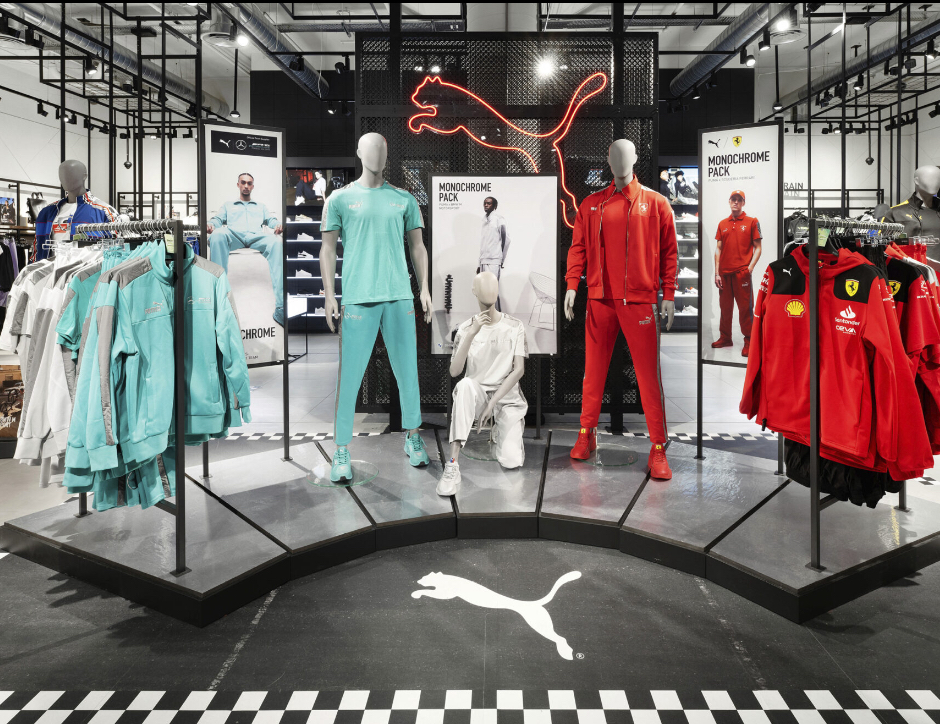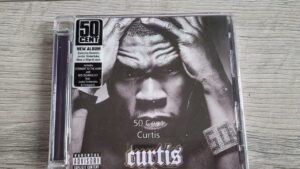In today’s highly competitive retail landscape, brands must go beyond traditional shopping experiences to capture consumer attention, drive engagement, and foster loyalty. The PUMA Group has emerged as a leader in this transformation, leveraging neuroscience-driven retail strategies to create immersive experiences that connect with consumers on a deeper, emotional level.
A prime example of this innovative approach was PUMA’s recent Shanghai activation at the West Bund Dream Center, where the brand transformed the venue into an electrifying racing district. This experiential event not only provided an engaging, gamified retail experience but also demonstrated how neuroscience principles can be harnessed to influence consumer behavior and decision-making.
By understanding the role of dopamine triggers, social currency, premium positioning, digital integration, and smart product placement, PUMA was able to create an activation that boosted engagement, extended brand reach, and reinforced its premium status in the market. This case study explores the psychological principles that underpinned PUMA’s groundbreaking activation and how they represent the future of modern retail.
The Power of Experiential Retail: PUMA’s Shanghai Activation
From December 20th to 22nd, PUMA took over the West Bund Dream Center in Shanghai, turning it into a fully immersive racing-inspired experience. This was not just a pop-up shop—it was an elaborate, multisensory environment that blended entertainment, competition, and brand storytelling.
Visitors were transported into a world of racing garages, pit stops, and floor-to-ceiling tracks, creating an arcade-like atmosphere that evoked both nostalgia and excitement. Participants became drivers in their own high-energy adventure, collecting tokens, earning certificates, and competing in challenges that mirrored the thrill of a real race.
But behind the spectacle was a deliberate psychological framework—one that leveraged key neuroscience principles to maximize engagement, drive brand affinity, and encourage social sharing.
The Neuroscience Behind PUMA’s Activation Success
Dopamine Triggers: Gamification and Reward Systems
One of the most powerful drivers of human behavior is the brain’s dopamine system—the chemical pathway responsible for feelings of pleasure and motivation. PUMA’s activation masterfully tapped into dopamine release by incorporating gamification and reward cycles into the experience.
• Token collection and challenges: As visitors progressed through different racing-themed activities, they earned tokens and certificates—creating a sense of achievement and motivation to continue engaging.
• Micro-rewards leading to macro-engagement: Each accomplishment, no matter how small, triggered a dopamine boost, reinforcing positive brand association and encouraging deeper participation.
• Exclusive rewards: The opportunity to win exclusive PUMA merchandise further enhanced the sense of accomplishment, turning product acquisition into a reward-based experience rather than a simple transaction.
By designing an experience that kept consumers in a constant state of pursuit and gratification, PUMA effectively ensured that visitors remained engaged for extended periods—a critical factor in retail success.
Social Currency: Creating Shareable Moments
In the digital age, a retail experience is only as valuable as its shareability. PUMA understood this concept and engineered key moments that encouraged attendees to capture and share their experiences online.
• Photo-ready installations: PUMA created interactive “gas stations” and branded pit stops, offering aesthetically compelling photo opportunities that fit seamlessly into social media feeds.
• Shareable status symbols: Attendees received personalized driver credentials, further enhancing the exclusivity of the experience while providing content for Instagram, WeChat, and Douyin posts.
• Viral amplification: With visitors eagerly sharing their achievements, the activation extended beyond the physical venue—reaching thousands more online and reinforcing PUMA’s cultural relevance.
By weaving social currency into the event design, PUMA not only created a buzz-worthy experience but also leveraged user-generated content as a powerful brand amplifier.
Premium Positioning: Aligning with Luxury Expectations
PUMA’s strategic branding ensures that it maintains a premium market position, appealing to both sportswear enthusiasts and high-end fashion consumers. The Shanghai activation reinforced this through sophisticated experience design and exclusive product drops.
• Racing-inspired aesthetics: The activation’s sleek, high-octane visuals aligned perfectly with luxury experiences, giving attendees the feel of being part of an elite motorsport event.
• Rosé’s silver jacket placement: The careful integration of high-profile fashion pieces—like the silver jacket associated with PUMA ambassador Rosé—created aspirational style moments that resonated with trend-conscious consumers.
• Luxury consumer psychology: The limited availability of certain event-exclusive items positioned PUMA’s merchandise as collectibles, increasing desirability and perceived value.
By crafting an experience that felt exclusive and elite, PUMA reinforced its premium brand perception—a crucial element in maintaining consumer loyalty and attracting high-value customers.
Digital Integration: Expanding Beyond Physical Space
While the activation was a physical event, PUMA ensured that it had a far-reaching digital presence. The brand partnered with Tmall Heybox, a leading e-commerce platform, to extend the experience beyond Shanghai.
• Online participation: Consumers who couldn’t attend in person could engage digitally, ensuring maximum reach and inclusivity.
• Data-driven engagement: The integration of Tmall Heybox allowed PUMA to track consumer interactions, offering valuable insights for future marketing campaigns.
• Bridging the physical and digital worlds: By seamlessly merging online retail with an in-person experience, PUMA enhanced brand accessibility while maintaining exclusivity.
This phygital (physical + digital) strategy is a blueprint for modern retail success, as brands must find ways to connect physical activations with digital commerce for maximum impact.
Smart Product Integration: Storytelling Through Merchandise
PUMA didn’t just showcase products at the activation—it embedded them into the experience, making them feel essential rather than optional.
• Speedcat Colorways as Racing Gear: The new Speedcat sneakers were positioned as must-have racing essentials, seamlessly blending into the event narrative.
• Exclusive Merchandise as Incentives: Gaming rewards included limited-edition PUMA items, turning shopping into a gamified achievement rather than a mere purchase.
• Emotional Connection Through Style: By associating Rosé’s silver jacket with the activation, PUMA elevated the product’s desirability, ensuring that it became a sought-after statement piece.
This subtle yet powerful approach to product placement ensures that consumers don’t just see a product—they experience it, forming a deeper emotional connection with the brand.
Impression
PUMA’s Shanghai activation wasn’t just a retail event—it was a masterclass in neuroscience-driven consumer engagement. By harnessing dopamine triggers, creating social currency, reinforcing premium positioning, integrating digital touchpoints, and embedding smart product placement, the brand redefined what retail success looks like in the modern era.
Building on the momentum of its September Douyin collaboration, PUMA continues to set new benchmarks for immersive retail experiences—transforming customers into passionate brand advocates.
As retail moves into an increasingly experiential and emotionally-driven space, brands that leverage neuroscience and psychology will be the ones that thrive. PUMA’s Shanghai activation blueprint serves as a model for the future, proving that when emotion, experience, and exclusivity converge, true brand loyalty is built.
No comments yet.








